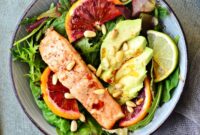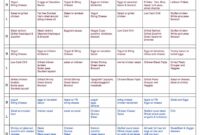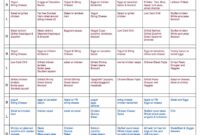South Beach Diet Online offers a convenient and accessible approach to this popular weight-loss plan. This guide delves into the core principles, phases, and food restrictions of the South Beach Diet, exploring both its online resources and potential drawbacks. We’ll examine various online programs, compare it to other diets, and provide practical tips for meal planning and success. Ultimately, this exploration aims to provide a balanced perspective on utilizing online tools to achieve your weight-loss goals with the South Beach Diet.
From understanding the diet’s three phases to navigating the wealth of online resources, including recipe websites, meal planners, and supportive communities, we’ll cover everything you need to know to embark on your South Beach Diet journey. We’ll also discuss the importance of consulting a healthcare professional before starting any significant dietary changes.
Overview of the South Beach Diet
The South Beach Diet is a low-carbohydrate diet that emphasizes healthy fats and lean proteins. Unlike some other low-carb diets, it focuses on choosing the right types of carbohydrates, prioritizing those with a lower glycemic index, which means they cause a slower and more gradual rise in blood sugar. This approach aims to promote sustainable weight loss and improve overall health markers. The diet is structured in phases, each designed to achieve specific goals.
The core principles of the South Beach Diet revolve around making gradual, sustainable changes to your eating habits rather than relying on drastic restrictions. It prioritizes whole, unprocessed foods and encourages mindful eating. The emphasis is not just on weight loss, but also on improving blood sugar control, reducing inflammation, and boosting energy levels. This differs from many crash diets that focus solely on rapid weight loss without considering long-term health implications.
Phases of the South Beach Diet
The South Beach Diet is divided into three phases: Phase 1, Phase 2, and Phase 3. Each phase has specific guidelines regarding food choices and portion sizes, gradually increasing the variety of foods allowed as you progress.
Phase 1: The Initial Phase (Weeks 1-2)
This phase is the most restrictive, focusing on eliminating unhealthy carbohydrates and sugars. The goal is to jumpstart weight loss and improve insulin sensitivity.
Allowed Foods: Lean proteins (fish, poultry, lean meats), healthy fats (olive oil, avocados, nuts, seeds), non-starchy vegetables (leafy greens, broccoli, peppers), and limited amounts of low-glycemic fruits (berries).
Restricted Foods: Sugary drinks, processed foods, refined carbohydrates (white bread, pasta, pastries), high-glycemic fruits (bananas, grapes), and most starchy vegetables (potatoes, corn).
Phase 2: The Transition Phase (Weeks 3-Onward)
This phase gradually reintroduces some healthy carbohydrates, such as whole grains and legumes. The emphasis remains on whole, unprocessed foods, and portion control continues to be important. The goal is to maintain weight loss while increasing dietary variety and nutritional intake.
Allowed Foods: All foods allowed in Phase 1, plus healthy whole grains (brown rice, quinoa, whole-wheat bread in moderation), legumes (lentils, beans), and a wider variety of fruits and vegetables.
Restricted Foods: Foods high in saturated and trans fats, sugary drinks, processed foods, and refined carbohydrates should still be limited.
Phase 3: The Lifetime Maintenance Phase
This is the long-term maintenance phase, designed to help you maintain your weight loss and healthy lifestyle. It encourages flexible eating habits while continuing to prioritize whole, unprocessed foods. This phase emphasizes mindful eating and portion control to prevent weight regain.
Allowed Foods: A wide variety of foods, including all those allowed in Phases 1 and 2, but with a focus on moderation and balance. Occasional indulgences are permitted, but should be consumed in moderation.
Restricted Foods: While more flexibility is allowed, highly processed foods, sugary drinks, and excessive amounts of unhealthy fats should still be minimized. This phase is about making sustainable, long-term dietary changes rather than strict rules.
South Beach Diet Online Resources
Navigating the digital landscape for dietary information can be overwhelming. Fortunately, several reputable online platforms offer resources and support for individuals following the South Beach Diet. Understanding the differences between these platforms is key to choosing the program that best suits your needs and preferences.
Finding reliable information and tools is crucial for successful weight management and overall health. This section details several reputable online resources for the South Beach Diet, compares their features, and highlights useful online tools.
Reputable Websites Offering South Beach Diet Information
The official South Beach Diet website is the primary source for accurate information. Other reputable sites may offer supplementary information, recipes, and community support, but always cross-reference information with the official source. Be wary of sites making unsubstantiated claims or promoting quick fixes. Reliable sources will emphasize sustainable lifestyle changes rather than rapid weight loss.
Comparison of Online South Beach Diet Programs
Various online programs offer different levels of support and features. Some programs provide detailed meal plans, while others focus on educational resources and community interaction. The cost also varies significantly, ranging from free access to basic information to paid subscriptions with personalized coaching and support. User reviews can provide valuable insights into the effectiveness and user experience of each program.
Online Tools and Calculators Supporting the South Beach Diet
Several online tools can assist in tracking progress, calculating macronutrient needs, and managing recipes. These tools often include calorie counters, macro trackers, and recipe generators specifically designed to align with the South Beach Diet’s principles. Many apps also offer community features, allowing users to connect with others following the same diet plan.
| Program Name | Features | Cost | User Reviews (Summary) |
|---|---|---|---|
| South Beach Diet Official Website | Educational materials, recipes, articles, some basic tools. | Free (limited access); paid for premium content. | Generally positive for the information provided; some users find the paid content expensive. |
| MyFitnessPal (with South Beach Diet tracking) | Calorie and macro tracking, recipe import, community features. | Free (basic); paid for premium features. | Highly rated for its comprehensive tracking capabilities; integration with South Beach Diet requires manual input. |
| Lose It! (with South Beach Diet tracking) | Similar to MyFitnessPal; focuses on weight loss tracking and goal setting. | Free (basic); paid for premium features. | Well-regarded for its user-friendly interface and effective tracking tools; manual input for South Beach Diet adherence is needed. |
| Cronometer (with South Beach Diet tracking) | Detailed macro and micronutrient tracking, extensive food database. | Free (basic); paid for premium features. | Praised for its precise tracking and detailed nutritional information; requires manual input for South Beach Diet compliance. |
| (Example Paid Program – Name withheld for neutrality) | Personalized meal plans, coaching, community forum, progress tracking tools. | Subscription-based (varying costs). | Reviews vary; some praise personalized support, while others find the cost prohibitive or the support lacking. |
Last Word
Successfully navigating the South Beach Diet online requires a balanced approach. While online resources offer convenience and support, it’s crucial to remember the importance of personalized dietary advice and mindful consumption. By understanding the diet’s principles, leveraging reliable online tools, and prioritizing your health, you can increase your chances of achieving sustainable weight loss and improved well-being. Remember to always consult with a healthcare professional before making significant changes to your diet.




